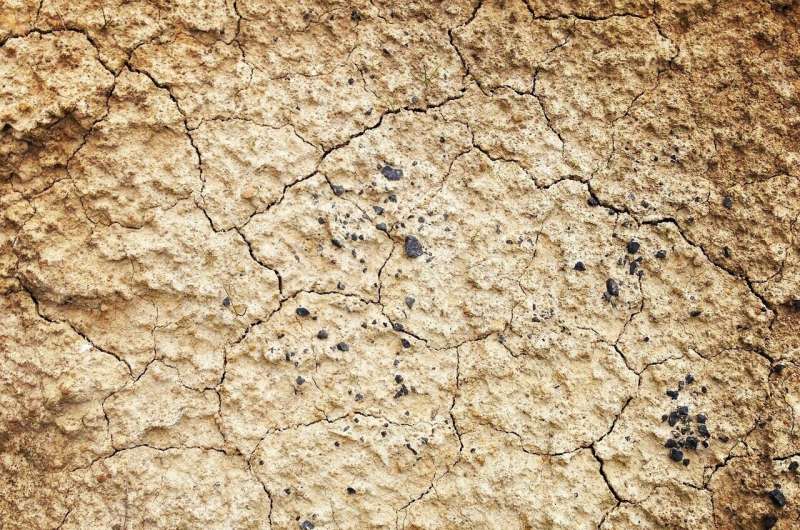This article has been reviewed according to Science X's editorial process and policies. Editors have highlighted the following attributes while ensuring the content's credibility:
fact-checked
peer-reviewed publication
trusted source
proofread
Poor soils lose carbon regardless of crop residue and nitrogen inputs, shows study

Let's say you're a corn grower farming on low-fertility soil. How do you go about making that soil healthier and more fertile? Many farmers think if they add plenty of nitrogen fertilizer, that nutrient, along with carbon, will be stored in the soil as organic matter when microbes decompose crop residue. But new research from the University of Illinois suggests those efforts might not work for poor soils.
The new study, published in the Soil Science Society of America Journal, compared corn residue decomposition in high- and low-fertility, with and without nitrogen fertilizers. The results came as a surprise.
"Corn residue decomposed significantly faster in poor, low-nitrogen-supplying soils compared to a fertile soil, especially when we added nitrogen, which stimulated microbial activity. It was a surprise, based on our earlier findings that showed high-nitrogen corn residue broke down faster," said study author Tanjila Jesmin, doctoral researcher in the Department of Natural Resources and Environmental Sciences (NRES), part of the College of Agricultural, Consumer and Environmental Sciences (ACES) at U of I.
Richard Mulvaney, professor in NRES and study co-author, explained poor soils have fewer aggregate particles, small craggy nuggets that house soil microbes and give soil its structure. With fewer aggregates, free-wheeling microbes roam loose in the soil, encountering carbon more frequently, gobbling it up, and creating carbon dioxide as a byproduct.
"In a poor soil with less aggregate stability, microbes have greater access to the residues and the carbon. And when there's a high nitrogen supply, they also have a high demand for carbon as an energy source. Eventually, their demand may exceed the carbon supply in residues, which may cause them to attack organic matter in the soil," Mulvaney said. "The microbes just keep burning it and evolving more carbon dioxide. It's a downward spiral."
To learn how soils of contrasting fertility mineralized carbon in the presence of corn residue, Jesmin performed a soil incubation study in the lab. She collected two soils of the same type from production fields in Central Illinois, one with high native nitrogen content and one depleted in nitrogen after 70 years of continuous cropping. She also collected corn residues from a single field; this time, the corn tissue didn't differ in terms of nitrogen content.
Jesmin incubated the soils in jars after applying different combinations of corn residues and one of two fertilizers: potassium nitrate or ammonium sulfate. She monitored continuous carbon dioxide emissions and intermittent changes in microbial activities from the incubation jars over a two-month period as a measure of microbial carbon mineralization.
"Fertilizer increased residue decomposition rates for both soils, but the fertilizer types behaved differently according to soil fertility," Jesmin said. "Potassium nitrate was more effective for increasing the residue decomposition rate in low-nitrogen soil, whereas ammonium sulfate had a greater effect in the high-nitrogen soil."
Jesmin also noted an acidification effect of fertilizer in the low-nitrogen soil, an issue that can limit roots' access to essential nutrients and deepen the downward spiral for poor soils.
"For me, the striking message from this paper is that it's not possible to improve low fertility soil by applying more fertilizer nitrogen to grow more residues. You can put nitrogen in the soil, but you can't keep it," Mulvaney said.
He added nitrogen management could potentially make a difference in low-fertility soils, for example applying fertilizer during the growing season as crops demand it. He also suggested reducing tillage intensity.
"Tillage, of course, is a factor that promotes mineralization, carbon dioxide production, and residue decomposition. Maybe if you go to a system like no-till, that could be useful for reducing microbial activities and their access to those residue carbon sources," he said. "It might help."
More information: Tanjila Jesmin et al, Residue‐ and nitrogen‐induced carbon mineralization varies with soil fertility status, Soil Science Society of America Journal (2023). DOI: 10.1002/saj2.20530
Journal information: Soil Science Society of America Journal
Provided by University of Illinois at Urbana-Champaign





















